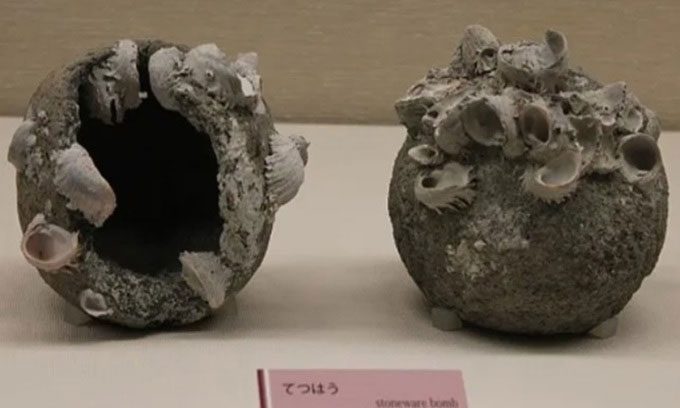Stone grenades filled with gunpowder in the core are convenient weapons for guards to throw at enemies attempting to breach the fortifications.

The newly discovered grenades have a design similar to previous specimens. (Photo: Wikimedia)
Researchers have discovered a series of 400-year-old stone grenades inscribed with orders for guards to be vigilant against enemies at a section of the Great Wall near Beijing, as reported by Live Science on October 26. This finding highlights the remarkable variety of early gunpowder weapons used during the Ming Dynasty, which ruled from 1368 to 1644, according to Tonio Andrade, a history professor at Emory University in Atlanta.
Scientists believe that gunpowder was invented in China around the 9th century. By the time the Ming Dynasty began its rule, various gunpowder-based weapons were already in use across East Asia, including explosive devices with nicknames such as “flying mice,” “fire bricks,” and “fireball spiked balls.” According to Xinhua, an archaeological team found 59 stone grenades in the ruins of a warehouse within the Great Wall at Badaling, a section built by the Ming Dynasty, located about 80 km northwest of Beijing.
These centuries-old grenades, made from stone with a drilled hole in the center for gunpowder filling, resemble previously found stone grenades, indicating that they were a common weapon for guards along the Great Wall during the Ming Dynasty. After loading with gunpowder, the grenades could be sealed and thrown, not only hitting the enemy but also causing an explosion, according to Shang Heng, a researcher at the Beijing Archaeological Institute. He noted that this is the first time a weapon storage facility has been discovered within the Great Wall.
Ma Lüwei, an archaeologist specializing in ancient Chinese military history, stated that such weapons were easy to make and convenient for soldiers stationed at the Great Wall to throw at invading enemies. Early grenades often ignited surrounding materials. However, the gunpowder formula of that time was still designed to maximize explosive power.
In addition to the grenades, archaeologists also uncovered the remnants of a stone fortress near the wall, several watchtowers, as well as fire pits, cooking stoves, shovels, and household items.




















































